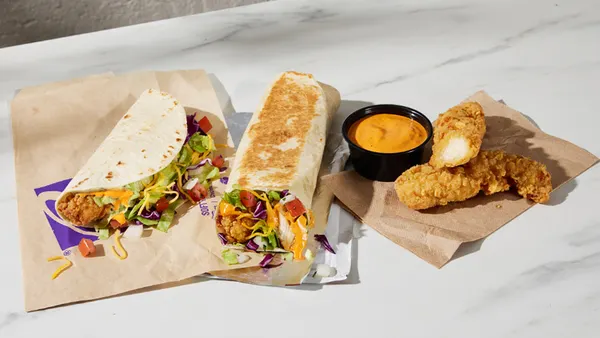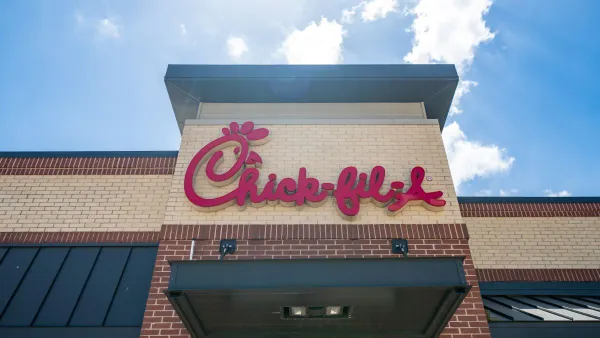In a year marked by sluggish restaurant IPO activity, eatertainment chain Pinstripes made its public debut in 2023 — perhaps signaling the growing strength of the eatertainment category.
By contrast, Fogo de Chao, which floated the possibility of an IPO in late 2021, sold itself to Bain Capital in 2023. Panera’s long-discussed IPO process has yet to reach its conclusion, leaving just Mediterranean fast casual Cava and Korean barbecue concept Gen Restaurant Group as the standout restaurant IPOs of last year.
At the ICR Conference in Orlando, Florida, earlier this month, executives from Pinstripes and competitor Puttshack discussed how post-pandemic consumer trends are driving traffic in the eatertainment space. These multipurpose venues are spots for nights out with friends, and serve as event hosting facilities and places for casual recreation. This business model, and strong diner demand, have made landlords friendly to eatertainment concepts, too.
Puttshack and Pinstripes have both leveraged deals with landlords and unique mixes of food, alcohol and gaming into exceptionally high unit volumes. Puttshack’s AUVs stand at about $12 million and Pinstripes reports AUVs of about $8.6 million, according to statements made by the leadership of both companies at ICR.
While both brands are examples of rapidly growing, high-volume eatertainment concepts, their overall strategies are fairly divergent, with Puttshack focusing primarily on games and drinks and Pinstripes on food and hospitality.
Gaming, alcohol make Puttshack strong
Puttshack owns the patent on self-scoring minigolf, where the golf balls themselves track the score. This leaves customers time to focus on their drinks and, potentially, speeds up the game, which would give Puttshack more chances to turn over its indoor golf courses.
For as long as its patent on automatically scored minigolf lasts, Puttshack will have an edge over competing minigolf concepts, which must either pay Puttshack for use of the technology or require customers to use cumbersome pen-and-paper scoring systems.
In an ICR presentation given by Logan Powell, Puttshack’s global president and CFO, and Joe Vrankin, Puttshack’s CEO, the company said the margins on gaming are 95%.
Mini golf accounts for about 40% of the brand’s revenue, and its food and beverage options skew more toward alcohol. Customers are allowed to drink while playing mini golf, but not to eat, further encouraging higher-margin alcohol consumption.
The public demand for experiential dining — and in Puttshack’s case, drinking — has driven Puttshack’s unit-level sales north of $12 million. The mix between gaming and food and beverage, meanwhile, means the brand’s unit-level margin is somewhere around 25%, Puttshack wrote in an email sent to Restaurant Dive.

Pinstripes focuses on hospitality
Meanwhile, a majority (53%) of Pinstripes’ revenue is driven by food, Pinstripes wrote in an email sent to Restaurant Dive. About 24% of the chain's revenue comes from the bar and only 21% from games — about half the proportion of Puttshack’s gaming revenue.
Pinstripes places less emphasis on high-margin alcohol sales than might be expected for an eatertainment brand.
“We just don't want raw, irresponsible drinking,” CEO Dale Schwartz said at an ICR presentation. “Our liquor license allows us to stay open until two in the morning, [and] we close at midnight.”
The brand focuses more on its food menu, and offers full-service dining throughout its facility. This model encourages customers to linger at Pinstripes, rather than turn tables over quickly.
“They may play bocce with us, then head to the bistro, then bowl afterwards and then still sit by the fire outside,” Schwartz said. “You can spend an hour at Pinstripes, you could spend six hours at Pinstripes.”
The events business is a major source of demand for the chain, Schwartz said.
“We do over 1,000 events every year at each location,” Schwartz said. “On a busy Saturday at one Pinstripes location, we may do 37 events starting at 10 in the morning.” Such a packed schedule requires careful choreography to make sure events can co-exist alongside open play, since the company prefers not to do buyout events unless the contracting party offers a considerable sum of money.
Like Puttshack, Pinstripes’ business is built around a stable of simple games, in this instance bocce and bowling. Pinstripes uses projection mapping technology in its bowling games — Schwartz described it as similar to technology behind recent exhibits of the art of Vincent van Gogh — but the company is wary of deviating from its core games.
“You won’t see us adding ping pong, or shuffleboard, and certainly not video games,” Schwartz said.”
By combining its sprawling locations with its menu offerings and games, Pinstripes has reached AUVs near $8 million. The chain’s real estate strategy is intended to situate its locations in areas that can sustain high traffic, and that have a sufficiently affluent customer base to support eatertainment.
“We characterize ourselves as a phenomenally exciting, expensive date for some of our landlord partners,” Schwartz said. “We bring a lot to the developments that we go into: 25,000 to 30,000 square feet and 800,000 to a million quality customers at a location.”
Pinstripes’ high traffic and large footprint appeal to landlords looking for major tenants, to the point that some offer “very attractive non-diluted tenant improvement monies,” to the chain, he said.
Pinstripes focuses on areas of affluence with high corporate density — markets that might have an Apple Store, Anthropologie and Whole Foods, for example. But the company, Schwartz said, only develops in areas that have long-term growth potential.
The highest tier of lifestyle centers, Schwartz said, will continue to improve, but the B and C trade areas are likely to go out of business, meaning lifestyle brands and consumer spending will become more geographically concentrated. Pinstripes has invested in marquee lifestyle centers like Topanga Plaza in Topanga, California and is working to develop locations like The Plaza Coral Gables in Coral Gables, Florida. For a previous article, Schwartz said the brand sees itself clustering around A markets, like Tysons Corner, Virginia, Bethesda, Maryland, both affluent suburbs of Washington, D.C., where Pinstripes has a unit in Georgetown















